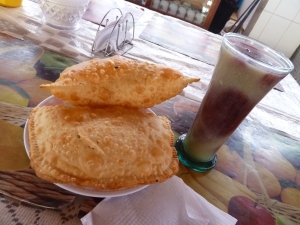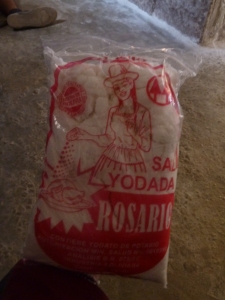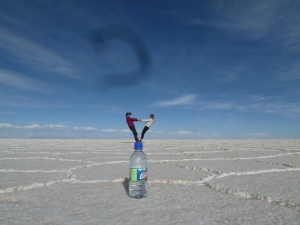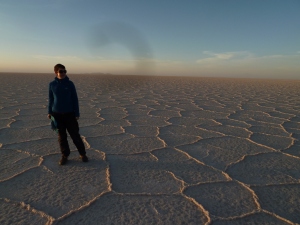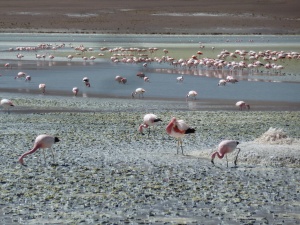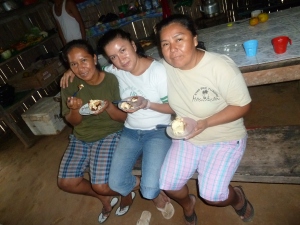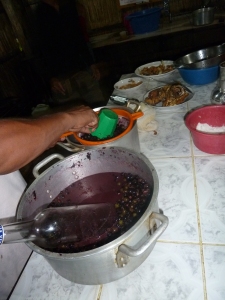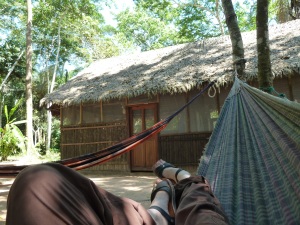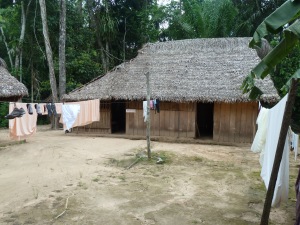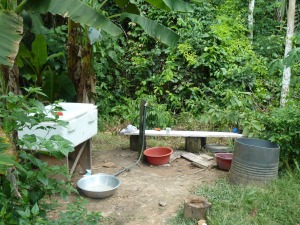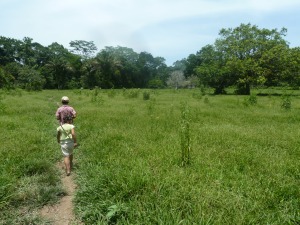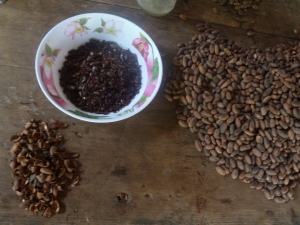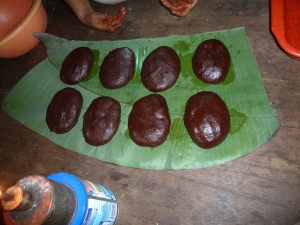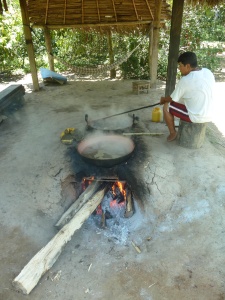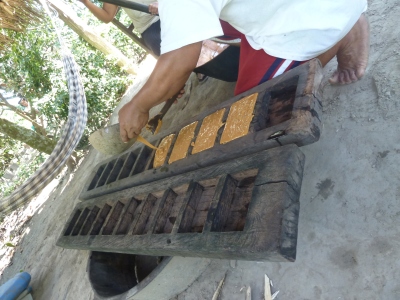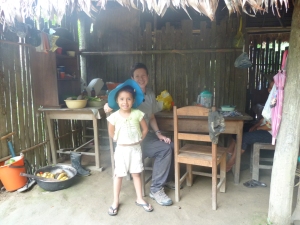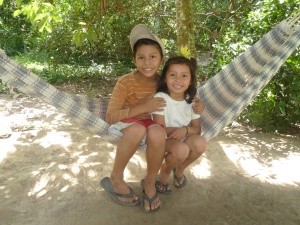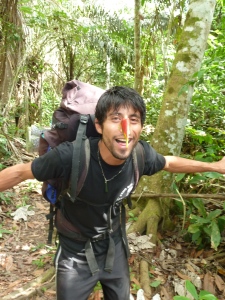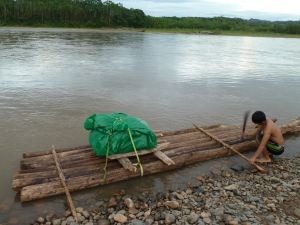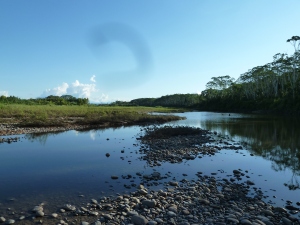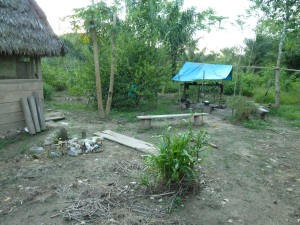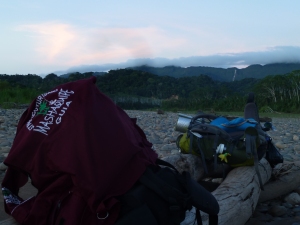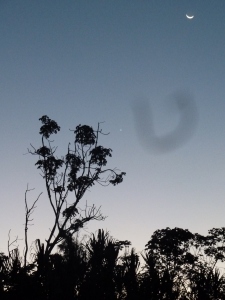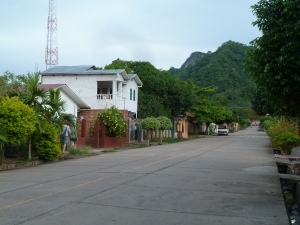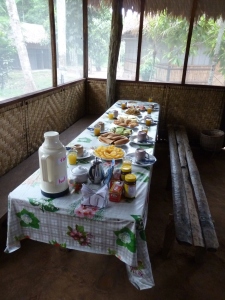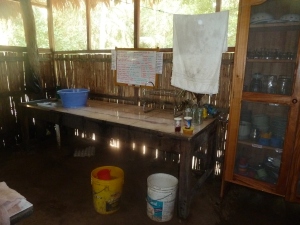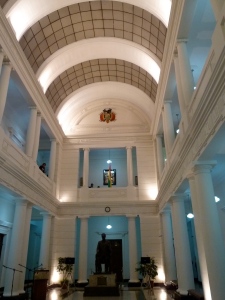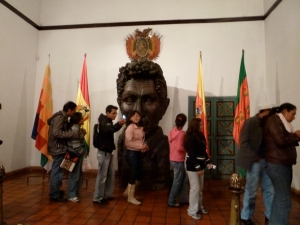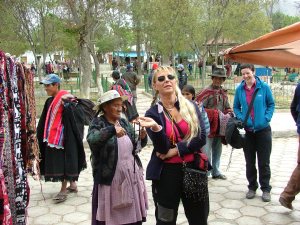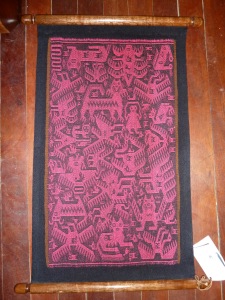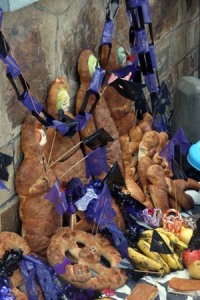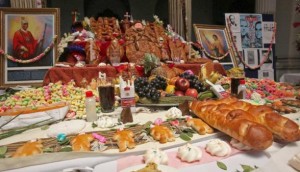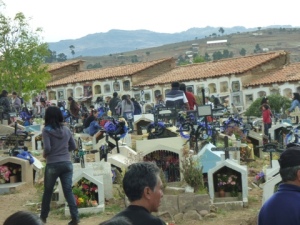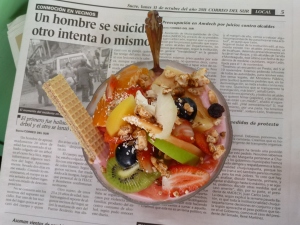After finishing the tour to Salar de Uyuni and around, I spent one night in Uyuni before catching an early morning bus to Tupiza. It was a typical Bolivian mid-distance bus, lacking all the mod cons and full of a whole variety of people. I finally saw someone carrying an animal on a bus (everyone tells you when you go backpacking in South America or Asia that you’re going to be taking buses full of people with animals but I’ve generally not found that the case, so far). There was a traditionally dressed lady carrying a little baby lamb in her arms – so cute!
In terms of gringos there was me, a Swiss girl, a couple of German guys and a couple of American missionaries in their typical black suits, white shirts, red ties, and name badge. For some reason I had a seat closer to the front of the bus and the rest of the gringos were sat together at the back.
The bus stopped unexpectedly in Atocha for a few hours, so I got off the bus with all the Bolivians, leaving the rest of the gringos in their seats looking out of the window. Atocha was a bit grim but it had a little bustling market and after crossing over the rail tracks I eventually found a toilet with the typical bucket of water flushing system. When I got back to the bus some girls had set up a stall next to the bus selling banana shakes, so I had one of those, which immediately prompted a response from one of the American missionaries who said I was mad to eat or drink anything from the street! He was too scared to do so and had gotten sick from eating in restaurants (so maybe god wasn’t watching over him after all…). A few hours later, and some traditional Bolivian folk music to listen to on the bus, we arrived in Tupiza.
Tupiza is a good place for horse riding but not much else. As I don’t like horse riding, my reason for stopping off was to do some last life admin stuff (washing, getting dollars, downloading photos etc) before crossing the border to Argentina. I managed to buy some amazingly cheesy Xmas cards with llamas and panpipes on them (which I posted from Argentina and never arrived) and some amazing bootleg mix CDs, each with about 150 songs on them.
I also enjoyed my last visit to a Bolivian comedor (dining hall) by having a nice typical breakfast of hot api with pasteles de queso (a hot drink made from white and purple corn and cheese empanadas). Then it dawned on my I was leaving Bolivia, my favourite country so far in South America, and I felt a little sad. I didn’t have time to dwell though as I had to plan my border crossing to Argentina.
There were various blockades and transport strikes happening around Uyuni and Tupiza so the bus station was closed. Although the buses were still leaving from outside the bus station I ended up getting a shared taxi to Villazon (the last town before crossing to La Quiaca in Argentina) which turned out to be quicker, more comfortable, only a fraction more expensive and with amazing scenery all the way. The taxi driver was super nice and instead of dropping me off in the square in Villazon, he drove me right down to the border crossing, for which I was very grateful.
Then I saw a massive queue snaking back from the immigration office all the way up the street! I’d advised to go straight to the office rather than joining the queue, which is for large groups (of Bolivians) travelling on buses. After a bit of faffing around, asking various border guards and people in different queues, I joined the short queue in front of the office and was quickly joined by three other women travellers from Australia, Greece, and Germany. One of the border guards took an interest and asked us where we were all from. Of course Australia prompted the usual response of kanguros (kangaroos) and Greece and England were not of much interest but we got a nazi salute in response to Germany! We were all SO shocked and explained to the guard (in Spanish) was this wasn’t at all funny and hoped that he wouldn’t do it again. We eventually got our exit stamps without incident, walked across the bridge (the border) and joined the queue for Argentinian immigration. We all got 90 days without any questions and then joined another queue for customs inspection of our bags. The first person through had her passport checked and bag searched, second person had her passport checked and bag squeezed from the outside, and the last two of us were just waved through. We obviously looked like sensible middle aged women because the young Italian hippy couple in front of us had to empty their rucksacks for a full inspection!
The first thing I saw when we crossed the border was a large sign saying Las Malvinas son Argentinas (the Falkland Islands belong to Argentina). I was also glad that I’d changed all my Bolivianos into Pesos on the Bolivian side (or so I thought – I later found 500 at the bottom of my rucksack at Xmas – doh!!) because there didn’t seem to be any cash machines between the border and La Quiaca on the Argentinian side
The taxi queue was too long so we walked into town and stopped to check out some concert in the square along the way. After some music I left the rest of the women at the square and headed off to find the bus station as I still had more than a 7 hour bus journey to go and it was already past lunch time. The bus station was less crazy than the ones in Bolivia and Peru – why wasn’t everyone shouting out the destinations so I knew who to buy a ticket from?! Eventually someone spotted me and sold me a (slightly overpriced) ticket to Salta, which at least was leaving in 10 minutes.
After all the stories I’d heard about the amazing buses in Argentina, I was a bit disappointed to get on an old looking bus that stopped all the time to pick up people from the side of the road with loads of luggage.
A few hours in we stopped at a military check point and all had to get off with all of our luggage for inspection. As the only gringo the guard asked to see my passport and then waved me through. Only afterwards did I realise he probably did this because I had nothing of interest or worth for him. Everyone else was carrying tons of goods (for Xmas and their businesses) and the guards went through each bag taking what they wanted whilst being really rude and disrespectful to everyone, especially the women. For example, the guards would pull out three pairs of trainers (not expensive branded ones or anything) and throw two into ‘their’ pile and give one pair back. It broke my heart to see people treated this way and I found it hard to watch everyone on the bus be treated this way, yet what could I do? When I later told this story to an Argentinian, they told me that I should write a letter to the Interior Security Minister to express my outrage.

I found this on the wall in Salta... I sleep a little, I dream a lot... (or I sleep very little sleep?)
12 hours after leaving Tupiza, Bolivia (and a ton of amazing scenery along the way) I arrived in Salta, Argentina. Much to my delight there was an empanada place across the road from the hostel so half a dozen cheese empanadas later (and with a full belly) I gratefully went to sleep.




